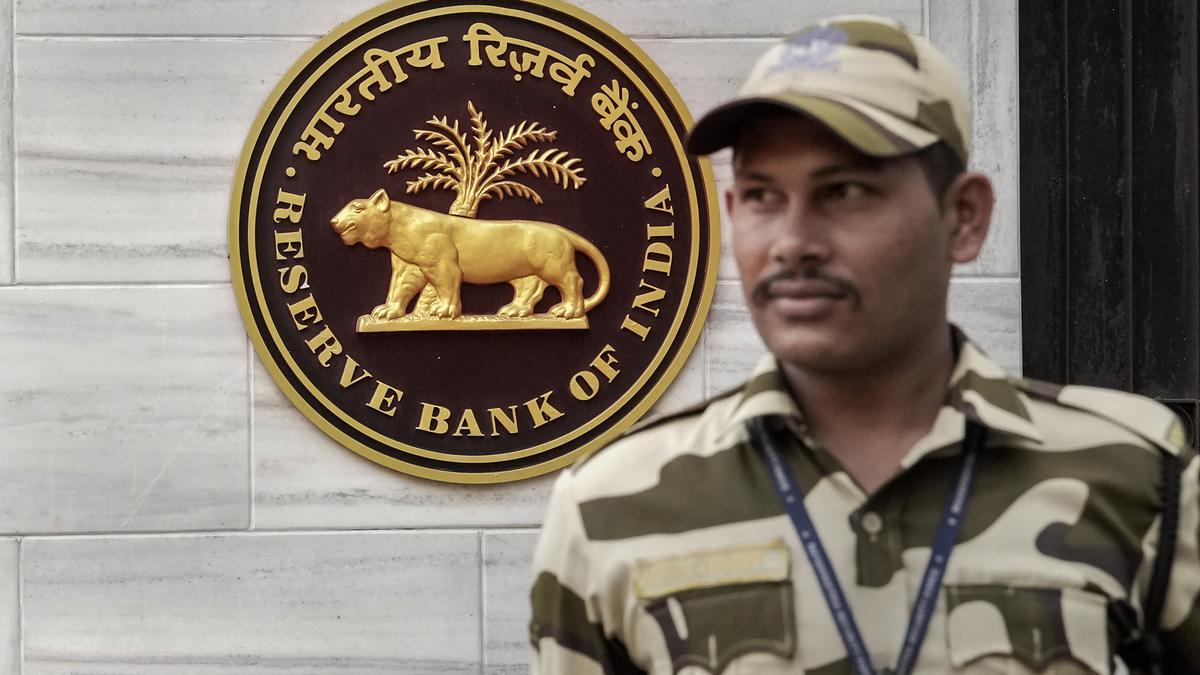File image.
| Photo Credit: PTI
The Reserve Bank of India (RBI) net sold $33.42 billion in the foreign exchange market in the first six months of current fiscal to defend the rupee from excessive volatility.
The Central Bank closely monitors the foreign exchange markets and intervenes only to maintain orderly market conditions by containing excessive volatility in the exchange rate, without reference to any pre-determined target level or band.
“During the financial year, the RBI’s operations have resulted in net sales of $33.42 billion till September 2022 (settlement basis),” Finance Minister Nirmala Sitharaman said in a reply to the Lok Sabha.
The exchange rate of the Indian Rupee (INR) against the greenback hit a record high of ₹83.20 per dollar on October 20, 2022. The value of rupee is market-determined.
As global spillovers from geopolitical tensions and aggressive monetary policy tightening across the world intensified alongside a surge in crude oil prices, the U.S. dollar strengthened by 7.8% in 2022-23 (till November 30, 2022), she said.
The rupee depreciated 6.9% in the same period, she said, adding, it has performed better than most Asian peer currencies, including the Chinese Renminbi (10.6%), Indonesian Rupiah (8.7%), Philippine Peso (8.5%), South Korean Won (8.1%), Taiwanese Dollar (7.3%) etc.
The RBI announced various measures in the recent period to expand sources of forex funding to mitigate exchange rate volatility, including hike in the external commercial borrowing limit to $1.5 billion and raising the all-in-cost ceiling by 100 basis points in select cases up to December 31, 2022, she said.
In order to promote growth of exports from India and support the increasing interest of the global trading community in the rupee, the RBI put in place an additional arrangement for invoicing, payment, and settlement of exports/imports in the rupee on July 11, 2022.
Replying to another question, Ms. Sitharaman said, non-performing assets including those in respect of which full provisions have been made on completion of four years, are removed from the balance-sheet of the banks concerned by way of write-off as per the RBI guidelines and policy approved by banks’ boards.
Banks evaluate and consider the impact of write-offs as part of their regular exercise to clean up their balance-sheet, avail of tax benefit and optimise capital, in accordance with the RBI guidelines and policy approved by their boards, she said.
The borrowers of written-off loans continue to be liable for repayment and the process of recovery of dues from the borrower in written-off loan accounts continues, the Minister said.
Banks continue to pursue recovery actions initiated in written-off accounts through various recovery mechanisms available, such as filing of a suit in civil courts or in Debts Recovery Tribunals, filing of cases under the Insolvency and Bankruptcy Code, 2016, she said.
As per RBI data on domestic operations, she said, 0.82% of gross NPAs of banks pertain to education loans as on March 31, 2022.




